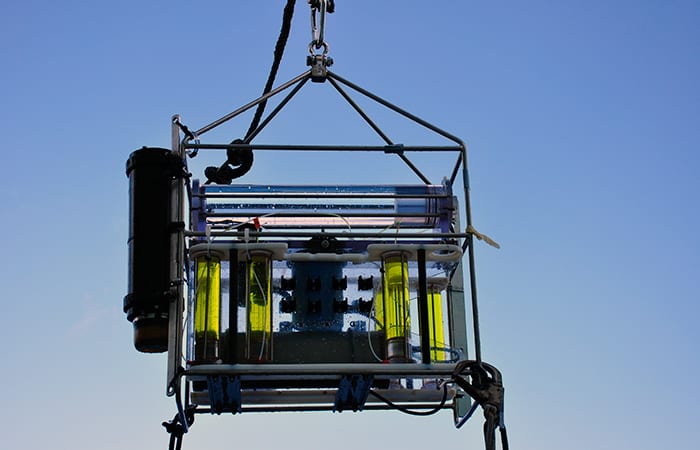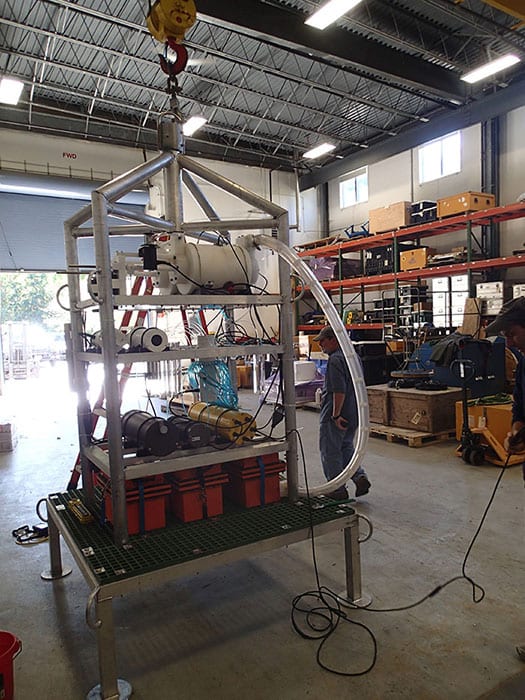Submersible Incubation Device (SID)
The Submersible Incubation Device (SID) is a robotic mini-laboratory that permits researchers at sea to automatically collect and process samples of seawater of precise volume at specified depth in order to study organisms that live in the water column, on the seafloor, or in hydrothermal vent fluid. Variations of the original SID have been optimized to sample, incubate, and preserve organisms that at precise locations or conditions within the seafloor environment.
The original SID was designed to measure a key aspect of ocean ecosystems: how fast single-celled photosynthetic organisms at the heart of the food web convert carbon dioxide into organic carbon. At the time, the standard shipboard method to do that required deploying sample bottles late at night, retrieving them to the sea surface by dawn, incubating the phytoplankton all day under conditions that allowed them to proceed normally with photosynthesis, and then, for hours after dark, preparing the samples for analysis. The objective of SID (and every variant thereafter) was to automate sample collection and processing to give researchers a glimpse into critical microbial functions beneath the surface without exposing collected or processed samples to surface conditions.
Deep-SID
This early variant of the original SID was specifically designed to collect and incubate unfiltered seawater samples in depths up to 1,000 meters below the surface.
MS-SID
Microbial sampler (MS) SID was designed to not only collect and incubate samples from the deep ocean, but also to filter and preserve organisms so they could be examined more closely upon retrieval and so that researchers could extract RNA from samples. MS-SID, can process volumes five times larger than the first SIDs, vastly improving the odds of detecting sparse organisms and their subtle chemical reactions. It can sample a six-foot-thick zone more than two miles below the sea surface, and it can communicate with the surface in real-time, permitting scientists to adjust sampling and/or processing protocols based on data from the instrument. Funding for the development of MS-SID was provided by the Department of Energy and the National Science Foundation.
Vent-SID (Experimental)
Vent-SID is a variant of the MS-SID that incubates samples of hydrothermal vent fluid at temperatures up to 60°C (140°F). Like MS-SID, it will also filter and preserve organisms in situ for later study and can process large volumes at depth with real-time communication and control of sampleing and processing protocols. First deployment of Vent-SID is scheduled for November 2014 at 9N on the East Pacific Rise. Funding for Vent-SID was provided by the National Science Foundation program for Ocean Technology and Interdisciplinary Coordination.
See Also
An Ocean Instrument is Born
Meet SID: the Submersible Incubation Device


